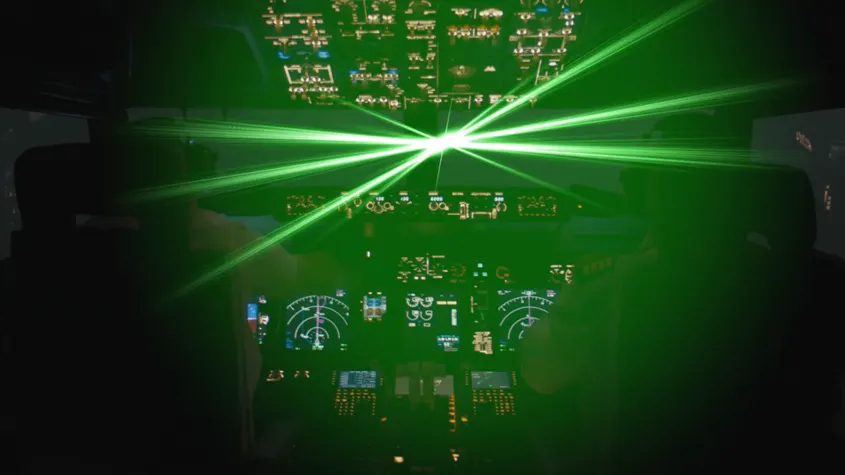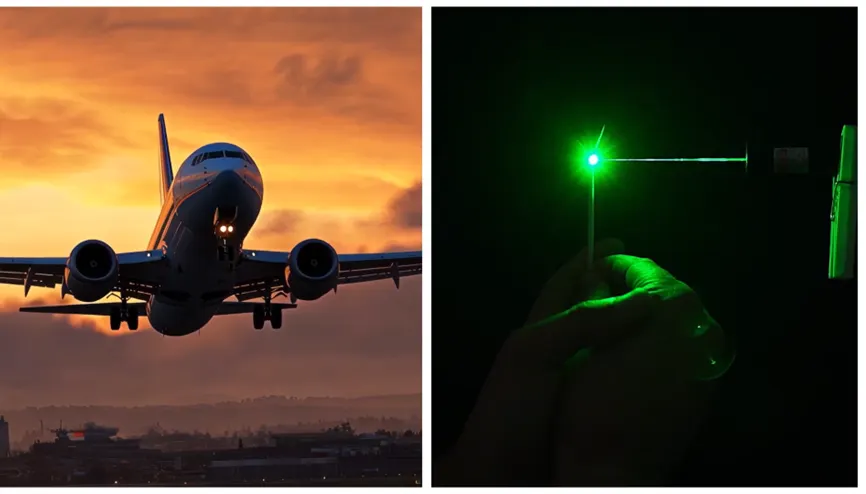FAA Maintains Focus on Dangerous Laser Strikes
Stacy Holland was flying a drug interdiction mission on the U.S.-Mexico border when a flash of intense light burst into the cockpit, scattering and reflecting off the glass. One of the suspected drug runners had pointed a laser at the aircraft in an attempt to distract him.
“The problem with lasers is they might start on the ground as a tiny, tiny beam, the size of a pencil eraser,” said Holland, lead pilot for the Texas Department of Public Safety. “But at 2,000 feet it might be the size of the pumpkin. There’s so much glass inside a helicopter when the light refracts you have a much bigger problem. Now you’re dealing with a mirror-like effect. It’s bouncing and mirroring itself across all the glass.”
Holland, who said he has experienced at least seven laser strikes, safely responded by looking out the window away from the light and maneuvering the helicopter so the tail blocked it. But the consequences could have been dire.
“Obviously, it puts not only the air crew at risk but the public at risk if you lose control of the helicopter,” he said.
As Holland’s story illustrates, lasers aimed at low-flying airplanes and helicopters present a significant safety risk. Maintaining aviation safety requires constant vigilance in addressing this threat on the part of pilots, air traffic controllers, the FAA and law enforcement. Last year, the FAA received 12,840 “lasing” reports from pilots, many of whom were flying airplanes carrying hundreds of passengers over densely populated communities.

From the perspective of a pilot approaching or departing an airport, a laser can envelop the entire flight deck and cause flash blindness — a painful and often damaging burning sensation in the eye — leading to a serious distraction. Pilots have reported 328 eye injuries since the FAA began recording data on laser strikes in 2010.
Shining a laser at an aircraft is illegal and the penalties are stiff. The federal penalty is up to five years in prison and a $250,000 fine, and people also face FAA fines of up to $11,000 per violation and up to $30,800 for multiple laser incidents. They also could face local and state criminal penalties.
A nationwide team of 25 FAA Law Enforcement Assistance Program (LEAP) agents collaborate with federal and local law enforcement to combat the laser-strike threat. They work proactively on a “hot spot” program to identify the highest three areas of laser strikes in each of their assigned regions and educate law enforcement and air traffic controllers there about the need for swift and coordinated action, says Montana Alexander, a supervisory investigations specialist with the FAA’s Office of Security and Hazardous Materials Safety.
“We’ve been successful working with law enforcement agencies that have air assets like the Texas Department of Public Safety,” he says. “If something is going on in real time, air traffic control can communicate with them and ask them to respond quickly. Ninety five percent of our cases are helicopter-identified because they have the equipment onboard to identify the location of the perpetrator.”

The LEAP agents also assist with criminal investigations and prosecutions, bringing the FAA’s expertise, resources and data about laser strikes to the external stakeholders.
So who are the perpetrators? Often, they’re “males in their 30s or 40s, who may have a criminal background, and often alcohol or drugs are involved,” Alexander says of cases he’s handled in Texas. In other cases, offenders tend to be younger males who have just purchased or received a laser pointer as a present and are curious about what they can do.
Holland says they’ve had great success apprehending violators and recovering lasers.
“We do our best to track the source of the laser and immediately contact law enforcement on the ground,” he says. “We then meet with local prosecutors and typically try to get the federal government to adopt the case. We’ve gotten substantial penalties using federal prosecution.”
Reporting Laser Incidents
The FAA needs everyone’s help in reporting laser incidents. The FAA requests that, upon arrival to their destination, all pilots and crew members affected by a laser strike complete the FAA Laser Beam Exposure Questionnaire to provide critical information in support of law enforcement efforts to identify and apprehend the responsible parties.
The FAA encourages air traffic controllers to submit laser incident information to the agency’s Domestic Events Network. And the FAA encourages members of the public who witness an individual aiming a laser at an aircraft to email laserreports@faa.gov with the following information:
· Your name and contact information;
· The date and time you witnessed the laser incident; and
· The location and description of the incident.
After the FAA receives your email, staff or the appropriate law enforcement agency may decide to contact you if they need additional information or clarification.
